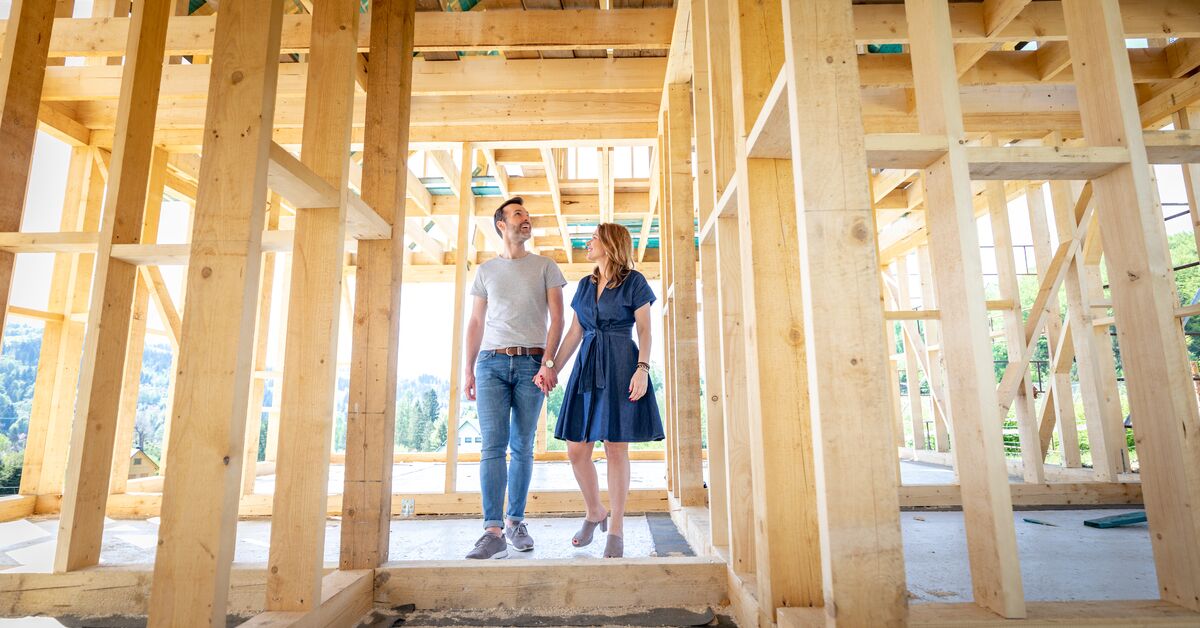
If you’re planning to build your dream home from the ground up, or complete structural renovations to your existing home, you may need to take out a construction loan from a lender. This loan differs from a regular mortgage, as it releases the loan funds in stages rather than a lump sum all at once.
While building your own home sounds exciting, it can become a bit tricky financially, and the application is more involved than other loans. We’ve broken down how a construction loan works, so you can begin to plan the home of your dreams.
What are Construction Loans?
Inovayt Mortgage Broker Melbourne, Hai Nguyen, defines a construction loan as, “A loan that you apply for when you are building a property (rather than purchasing an established property) or completing structural renovations to your home.”
When planning to build a property, whether off the plan or onto vacant land, it’s important to note that the financial side of things differs to a ‘regular’ mortgage on an established property. A construction loan is also necessary for any renovations to an existing house that require a structural change to the property.
How do I apply for a construction loan?
The application process for a construction loan is different to a typical home loan and you’ll need to provide quite a bit more in terms of documentation. Before submitting your application, you’ll need to assemble your building team. This includes a builder, architect, sub-contractors, and anyone else who will work on your project. Council approval is also required for any structural works before applying for the loan.
A lender will then assess your loan application by looking at your finances and the supporting documents you’ve provided them. The supporting documents you need to submit include:
- Council plans and permits
- Professional building plans with measurements
- Proof of land purchase
- A contract with a licensed builder
- Proof of builder’s insurance and other insurance policies
How does a construction loan work?
Construction loans work very differently – both in process and theory – to a mortgage. They are broken down into different stages, with payments given in instalments as opposed to a lump sum.
“Most lenders will allow you to pay interest-only repayments during the construction stage. This is because the lender is aware that you can’t move into a vacant lot of land, and most people are also paying board and rent at the same time,” Hai says.
As each stage of the build is signed off and completed, payments are sent to the builders from the lender. During this period, interest on the loan will only be paid on the amount that has been drawn down so far. For example, if you’re lending $400,000 and have only drawn $150,000 so far, you will only be charged interest on the $150,000.
The stages of a construction loan are below:
1. Slab
The first stage in the construction loan process is the ‘slab’ stage. Here, the concrete slab that will make up your home's foundation is measured and poured. Levelling and waterproofing of the ground are also done at this stage, alongside the builders who will connect the plumbing and drains.
This stage requires around 15-20 per cent of the loan funds.
2. Frame
The next stage is the frame of the house. The builder will turn their focus now to constructing the structure or skeleton of the property. This process takes roughly a day for a single-storey property and between two to five days for a two-storey property. It often covers partial brickwork, roofing, trusses, and windows.
This stage requires around 20 per cent of the loan funds.
3. Lock-up
The third stage of the building process is where the property really starts to take shape. As the name suggests, this is where your property will be ‘lockable’. All external walls, windows, doors, roofing, and insulation are added here to ensure the house can be locked up from the outside.
This stage requires around 20 per cent of the loan funds.
4. Fit-out
In stage four, the internal fittings of the house will be installed, and your home plastered and painted. This stage includes all interior fittings and fixtures, such as lights, plumbing, electricity, and gutters. It also covers the partial installation of benchtops and cupboards.
This stage requires around 30 per cent of the loan funds.
5. Completion
Completion is the final stage of your construction loan. In this final phase, loose ends on things like plumbing and electricity will be tied up and painting and detailing will be completed. To finish off, fences go up, and the site is tidied to look presentable.
This stage requires around 10 per cent of the loan funds.
Can I refinance a construction loan?
Most lenders won’t allow you to refinance your loan throughout the construction process however there is some lenders who will consider it under strict circumstances. Once the building has been completed, you will be able to refinance. Some homeowners choose to either refinance their construction loan after the process is finished or use an end loan. Others convert the loan to a standard mortgage when the house is fully constructed. Converting loans also means you will be switching from interest-only repayments to principal and interest repayments. This is also where your contracted loan term (e.g. 25 or 30 years) will commence.
Do I need a deposit for a construction loan?
Like a regular mortgage, a deposit is required to take out a construction loan.
“You will need a minimum deposit of 8 per cent for construction lending, as lenders will not lend more than a 95 per cent loan to value (LVR) ratio,” Hai says. “However, if you qualify for the first home buyer low deposit scheme for new homes, then you can get away with a 5 per cent deposit.”
Construction loans are more complex than regular mortgages or other loans which is why it's beneficial to work with a mortgage broker when wanting to apply for one. However, they benefit those looking for something other than an established property. If you’re considering building the home of your dreams but unsure how to go about it, our team of experts is here to help you through the process.

